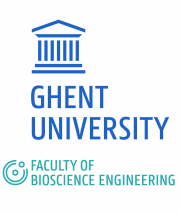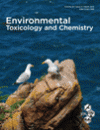 The global consumption of human antidepressants has steadily increased over the last years. The most widely prescribed antidepressants are the selective serotonin reuptake inhibitors (SSRIs), which have been linked to various life-history effects in nontarget organisms. We investigated the effects of the SSRI citalopram hydrobromide on the life history of the copepod Nitocra spinipes. The quantitative explanations provided in the present study offer a starting point for exploratory simulation studies investigating the effects of SSRIs at higher ecological levels.
The global consumption of human antidepressants has steadily increased over the last years. The most widely prescribed antidepressants are the selective serotonin reuptake inhibitors (SSRIs), which have been linked to various life-history effects in nontarget organisms. We investigated the effects of the SSRI citalopram hydrobromide on the life history of the copepod Nitocra spinipes. The quantitative explanations provided in the present study offer a starting point for exploratory simulation studies investigating the effects of SSRIs at higher ecological levels.| The Ghent University Environmental Toxicology unit (GhEnToxLab) aims to advance the understanding of ecotoxicological problems at different levels of biological organization, in order to improve ecologically relevant risk assessment of chemicals and other anthropogenic stressors in the environment. | |||||||
 The global consumption of human antidepressants has steadily increased over the last years. The most widely prescribed antidepressants are the selective serotonin reuptake inhibitors (SSRIs), which have been linked to various life-history effects in nontarget organisms. We investigated the effects of the SSRI citalopram hydrobromide on the life history of the copepod Nitocra spinipes. The quantitative explanations provided in the present study offer a starting point for exploratory simulation studies investigating the effects of SSRIs at higher ecological levels.
The global consumption of human antidepressants has steadily increased over the last years. The most widely prescribed antidepressants are the selective serotonin reuptake inhibitors (SSRIs), which have been linked to various life-history effects in nontarget organisms. We investigated the effects of the SSRI citalopram hydrobromide on the life history of the copepod Nitocra spinipes. The quantitative explanations provided in the present study offer a starting point for exploratory simulation studies investigating the effects of SSRIs at higher ecological levels. This week, one of our colleagues is beginning a new adventure at the contract research institute gaiac. Josef will be working at gaiac as a project manager in aquatic ecotoxicology and modelling. Congrats Josef!
This week, one of our colleagues is beginning a new adventure at the contract research institute gaiac. Josef will be working at gaiac as a project manager in aquatic ecotoxicology and modelling. Congrats Josef! 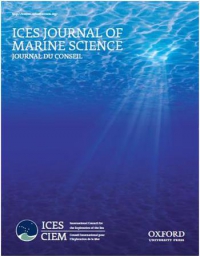 Here, we studied the community composition of zooplankton in the Belgian part of the North Sea over the course of 1 year. We identified zooplankton using both a traditional approach based on morphological characteristics and by metabarcoding of a 650 bp fragment of the V4-V5 region of the 18S rRNA gene using nanopore sequencing. Using long rDNA sequences, we were able to identify several taxa at the species level, across a broad taxonomic scale.
Here, we studied the community composition of zooplankton in the Belgian part of the North Sea over the course of 1 year. We identified zooplankton using both a traditional approach based on morphological characteristics and by metabarcoding of a 650 bp fragment of the V4-V5 region of the 18S rRNA gene using nanopore sequencing. Using long rDNA sequences, we were able to identify several taxa at the species level, across a broad taxonomic scale. 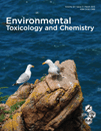 Neonicotinoid insecticides have become of global concern for the aquatic environment. Harpacticoid copepods are amongst the most sensitive organisms to neonicotinoids. We used these results in combination with publicly available ecotoxicity data to derive Environmental Quality Standards (EQS). These EQS were ultimately used in a single‐substance and mixture risk assessment for the Belgian part of the North Sea.
Neonicotinoid insecticides have become of global concern for the aquatic environment. Harpacticoid copepods are amongst the most sensitive organisms to neonicotinoids. We used these results in combination with publicly available ecotoxicity data to derive Environmental Quality Standards (EQS). These EQS were ultimately used in a single‐substance and mixture risk assessment for the Belgian part of the North Sea. 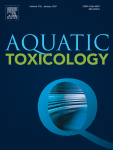
The present study aimed at investigating interactive effects between dietary lipids and both short- and long-term exposures to a low, environmentally realistic, cadmium (Cd) concentration. We found that both dietary lipids and Cd exposure influenced fatty acid homeostasis and metabolism.
 GhEnToxLab and its partners have recently concluded the NEWSTHEPS project on “New Strategies for Marine Risk Assessment of Chemicals using Passive Samplers”, and the Final report is now publicly available. Our lab was involved in developing a new effect-based monitoring approach using passive samplers for risks assessment and an automated algorithm to calculate predicted no effect concentrations (PNECs), i.e. concentrations for individual chemicals protecting marine ecosystems.
GhEnToxLab and its partners have recently concluded the NEWSTHEPS project on “New Strategies for Marine Risk Assessment of Chemicals using Passive Samplers”, and the Final report is now publicly available. Our lab was involved in developing a new effect-based monitoring approach using passive samplers for risks assessment and an automated algorithm to calculate predicted no effect concentrations (PNECs), i.e. concentrations for individual chemicals protecting marine ecosystems.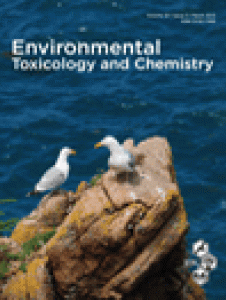 Mechanistic population models are gaining considerable interest in ecological risk assessment. The dynamic energy budget approach for toxicity (debtox) and the general unified threshold model for survival (guts) is a well‐established theoretical framework that describes sub‐lethal and lethal effects of a chemical stressor, respectively. However, there have been limited applications of these models for mixtures of chemicals, especially to predict long‐term effects on populations.
Mechanistic population models are gaining considerable interest in ecological risk assessment. The dynamic energy budget approach for toxicity (debtox) and the general unified threshold model for survival (guts) is a well‐established theoretical framework that describes sub‐lethal and lethal effects of a chemical stressor, respectively. However, there have been limited applications of these models for mixtures of chemicals, especially to predict long‐term effects on populations.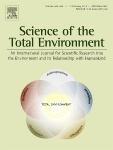 The increasing number of chemicals detected in the marine environment underlines the need for appropriate prioritization strategies prior to further testing and potential inclusion into monitoring programs. Here, a prioritization strategy is proposed for chemicals detected in the North Sea over the last decade, through the development of a Concern Index (CI) using exposure and toxicity data obtained from peer-review publications and the ToxCast database, respectively.
The increasing number of chemicals detected in the marine environment underlines the need for appropriate prioritization strategies prior to further testing and potential inclusion into monitoring programs. Here, a prioritization strategy is proposed for chemicals detected in the North Sea over the last decade, through the development of a Concern Index (CI) using exposure and toxicity data obtained from peer-review publications and the ToxCast database, respectively.
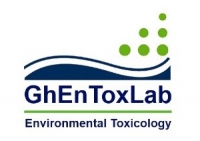
The laboratory of Environmental Toxicology and Aquatic Ecology, Environmental Toxicology Unit - GhEnToxLab (Ghent University) is looking for an:
ACADEMIC ASSISTANT @ GhEnToxLab
ECOLOGICAL MODELING FOR ECOTOXICOLOGICAL APPLICATIONS
ABOUT GHENT UNIVERSITY
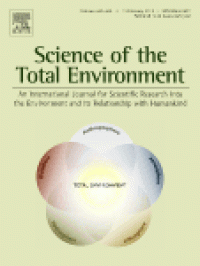 Organisms in the marine environment are being exposed to an increasing variety of chemicals. This research presents an effect-based monitoring method for the derivation of a margin of safety for environmentally realistic chemical mixtures. The method is based on a combination of passive sampling and ecotoxicity testing. Across eight marine samples, diatom growth inhibition was observed at REF ≥ 3.2 and margins of safety were found between REF 1.1–11.0. In addition, we found that reconstitution of extracts in HPLC-water was suitable to overcome the solvent-related challenges in biotesting that are usually associated with passive sampler extract spiking, whilst it still allowed REFs up to 44 in the biotest medium to be achieved.
Organisms in the marine environment are being exposed to an increasing variety of chemicals. This research presents an effect-based monitoring method for the derivation of a margin of safety for environmentally realistic chemical mixtures. The method is based on a combination of passive sampling and ecotoxicity testing. Across eight marine samples, diatom growth inhibition was observed at REF ≥ 3.2 and margins of safety were found between REF 1.1–11.0. In addition, we found that reconstitution of extracts in HPLC-water was suitable to overcome the solvent-related challenges in biotesting that are usually associated with passive sampler extract spiking, whilst it still allowed REFs up to 44 in the biotest medium to be achieved.
